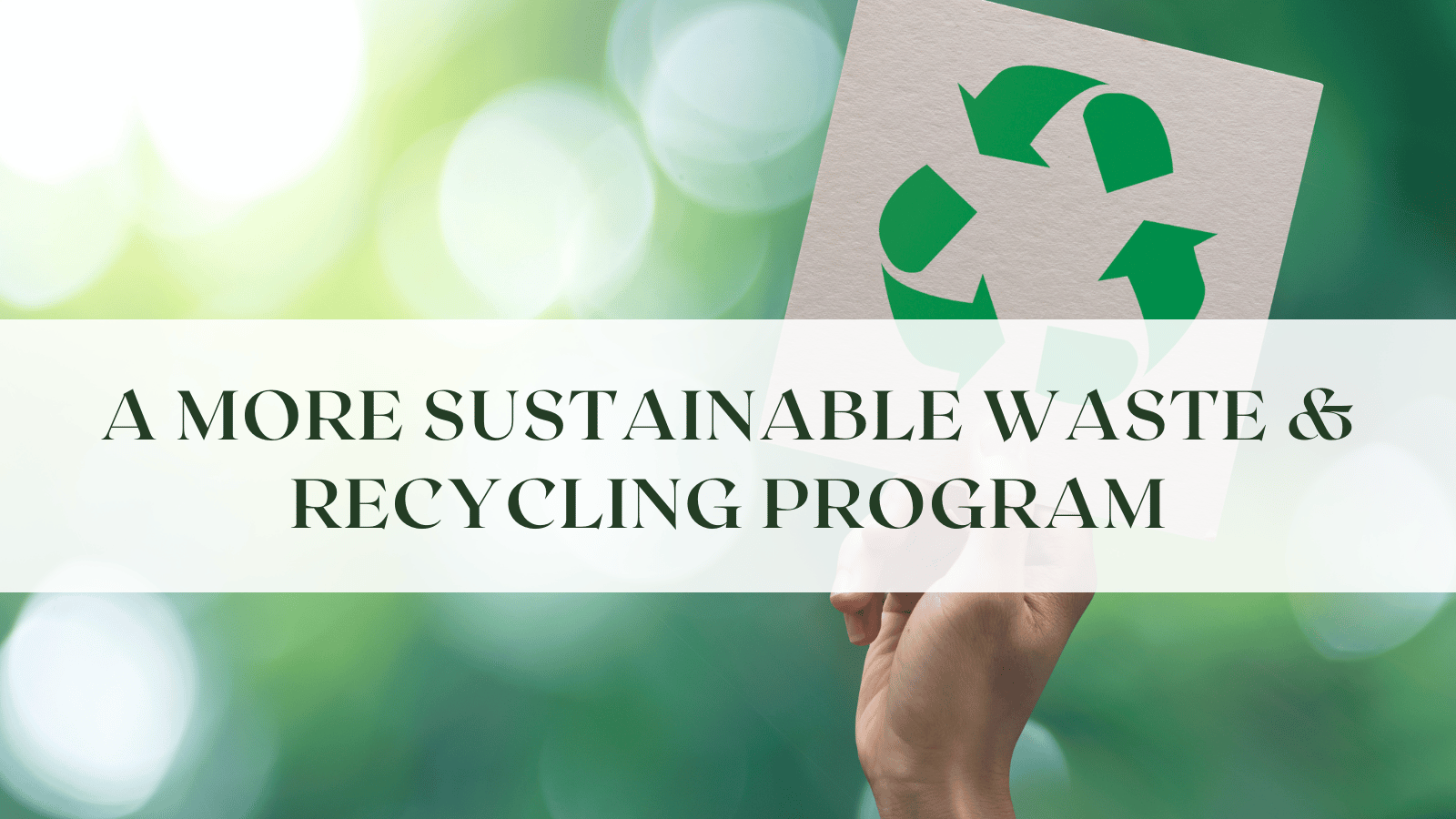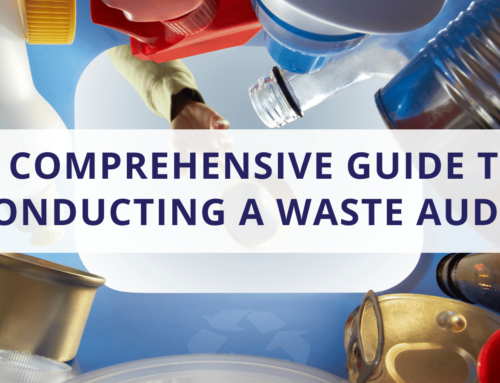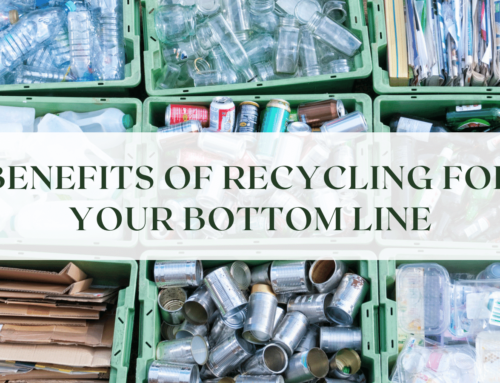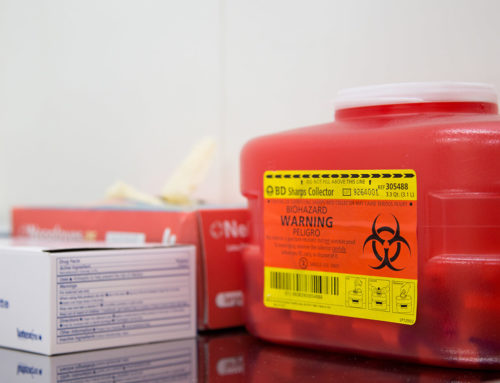Trash. Your customers make some. You make some. Even your employees create some. Soon you have trash mountain to dispose of with high disposal fees plus fuel charges. Okay. Maybe you don’t quite have trash mountain, but your facility does produce waste daily. Plus, as a business owner, you understand waste disposal can be costly. However, what if you could decrease costs while being environmentally friendly? Sounds pretty good right? Then maybe it’s time you turn in your old trash program and implement a more sustainable waste and recycling program.
In this blog post, we discuss some of the benefits of implementing a sustainable waste and recycling program and how to start.

Why Does This Matter?
However, before we dive into the tips, tricks and more, it’s important to understand the why. Why this is important and the environmental effects to be more specific.
In 2018, the Environmental Protection Agency, or EPA, conducted research on waste in landfills and determined 146.1 million tons of trash was disposed of. This meant 35 million tons of food waste decomposing in landfill instead of composted. 64.284 million tons of recycling thrown away. Tons, upon tons, of resources sitting in a landfill instead of being reused or recycled. Talk about a trash mountain that could have been reduced greatly into a trash hill.
Implementing a Sustainable Waste and Recycling Program
Starting or revamping your current program into a more sustainable one doesn’t need to be complex or cause anyone in your facility a headache. If you’re currently recycling, you’re ahead of the game. Now you just see where to improve. Haven’t started yet? You’re not alone and it’s not difficult to start.
Here are some tips for implementing a sustainable waste and recycling program in your business:
- Start by assessing your current waste and recycling practices. How much waste do you generate each day? What types of waste are you generating? Where is your waste going? Once you have a good understanding of your current situation, you can start to develop an improvement plan.
- Set goals for reducing waste and increasing recycling. How much waste do you want to reduce by the end of the year? What percentage of your waste do you want to recycle? Setting specific goals help you to stay on track.
- Make it easy for employees to recycle and compost. Provide convenient recycling and composting bins throughout your workplace. Make sure the bins are clearly labeled and easy to use.
- Educate your employees about the importance of recycling and composting. Hold training sessions or distribute educational materials to help your employees understand the benefits of recycling and composting.
- Involve your employees. Ask your employees to help you to promote recycling and composting. You can do this by creating a recycling and composting committee or by offering incentives for employees who recycle and compost.
By following these tips, you can implement a sustainable waste and recycling program to benefit your business and the environment.
Benefits of a Sustainable Waste and Recycling Program
Numerous benefits will be within reach once you implement your sustainable waste and recycling program. These benefits include the following:
- Reduced costs: By adding recycling and composting, you reduce the amount of waste sent to landfills. Thus saving money on disposal fees.
- Improved environmental performance: Recycling and composting help to reduce pollution and conserve natural resources.
- Enhanced employee morale: Employees are more likely to be proud of their work and stay with your company if they know you are committed to sustainability.
- Increased customer loyalty: Customers look for environmentally responsible businesses. By implementing a sustainable waste and recycling program, you attract and retain customers who care about the environment.
Bonus Tips!
We all deserve extra tips from time to tip. Besides keeping an eye out for the recycling symbol on each item, below are a few bonus tips to help you get started or things to consider when recycling.
- Use recycled products. When you purchase recycled products, you reduce the demand for virgin materials.
- Reduce paper usage. Use electronic communication whenever possible and print double-sided when you do need to print something.
- Compost food scraps. Food scraps go into the compost bin and turn back into rich soil. Thus reducing the need for fertilizer.
- Recycle electronics and batteries. Electronics contain hazardous materials that pollute the environment if not disposed of properly.
- Lightbulb recycling. Yes! Even lightbulbs can be recycled. Talk to your recycler to get started.
Get Started Today!
Don’t wait to start analyzing your current waste and recycling program to see where improvements can be made. Gather the team and rally together as you begin finding ways to reduce your carbon footprint and increase your recycling efforts as a group effort is the key to success.
Unsure where to get started? SLM Facility Solutions Nationwide has over 25 years of assisting companies just like yours to become more sustainable. We assist you in conducting an audit of your current waste and recycling program. Then create a customized, tailored sustainable waste and recycling programs based on regulations, budgets, and goals. Contact us for a greener tomorrow for your facilities.






